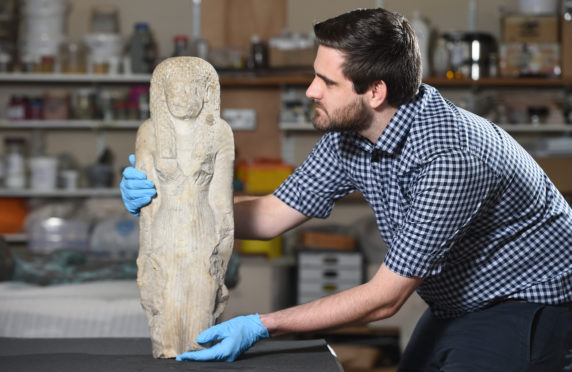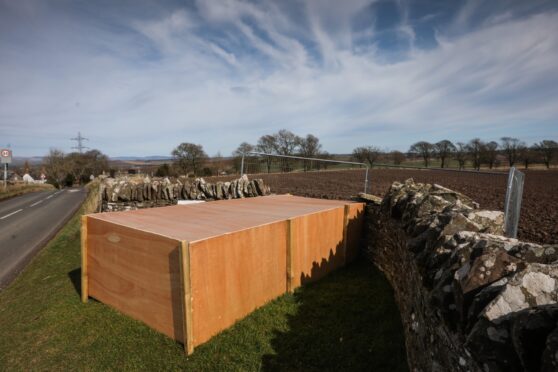An ancient Egyptian mystery has been cracked ahead of the opening of a new touring exhibition from National Museums Scotland in Angus this weekend.
Curators examined a limestone statue which has been in the collection at Montrose museum since 1837 and concluded it was an “exquisite” sculpture of a female temple musician called Meramuniotes, who lived between 332-30 BC.
The back of the statue is inscribed with a long, hieroglyphic text which has been fully translated for the first time. It discusses Meramuniotes’ family, her role in the temple and her wishes for the afterlife.
Her parents, siblings and descendants were all involved in the temple priesthood of ancient Thebes, and the inscription explains she played the sistrum – a percussion instrument – in the temple of Amun-Ra.
Her mother, Nehemesratawy, held the same role, and the two women may have worked together. Statues commemorating other members of her family can be found in museums in Cairo, Turin and London.
It was donated to the newly formed museum in 1837 by Montrose-born Dr James Burnes, a relative of Robert Burns, who worked as the physician general for Bombay (Mumbai).
After being sent on sick leave suffering from malaria, he travelled home to Scotland via Egypt in 1834 and collected the statue during his visit.
Dr Daniel Potter, assistant curator for the Revealing Cultures Project at National Museums Scotland said it was one of the finest examples of Ptolemaic – statuary depicting a non-royal individual – in the UK.
He said: “Not only it is beautifully carved but it shares an amazing connection with Montrose. Until recently, rather little was known about it. Now, by working with our colleagues at Montrose Museum to explore their collections, we have been able to reveal some of the secrets of this remarkable object.
“Through this work, we have established how unique the statue is, and to put a name to the person it depicts and learn more about her and her relatives. It is a wonderful chance to connect with a family from over 2,000 years ago.”
Meramuniotes’ statue will be displayed as part of the Discovering Ancient Egypt exhibition, which brings together objects from the collections of National Museums Scotland and each of the three touring venues – in Hawick, Montrose and Cumnock.
It explores Scotland’s contribution to Egyptology through the lives of three people – an- archaeologist, artist and astronomer – whose work in the field helped to improve our understanding of ancient Egyptian culture; Alexander Henry Rhind (1833-1863), Annie Pirie Quibell (1862-1927) and Charles Piazzi Smyth (1819-1900).
ANGUSalive has received funding from Museums Galleries Scotland, Montrose Heritage Trust and a private donor to display the statue of Meramuniotes in a new case.
Caroline Taylor, Museum Officer at Montrose Museum, said: “We are delighted that we will have the chance to showcase the statue of Meramuniotes and highlight her story, as well as how the statue was brought to Montrose, in an engaging way for our visitors.”
The Discovering Ancient Egypt tour will be at Montrose Museum from June 8 to September 7.










